Posts Tagged: Mexican sunflower
Up Close and Personal with a Yellow-Faced Bumble Bee
Sometimes they barely notice you. Such was the case of a yellow-faced bumble bee, Bombus vosnesenskii, spotted on our Mexican sunflower...
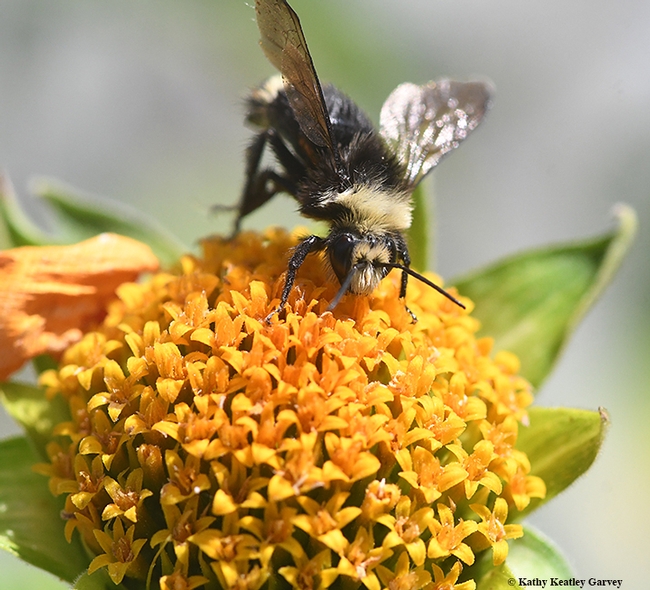
A yellow-faced bumble bee, Bombus vosnesenskii, foraging on a Mexican sunflower (Tithonia) in Vacaville, Calif. (Photo by Kathy Keatley Garvey)
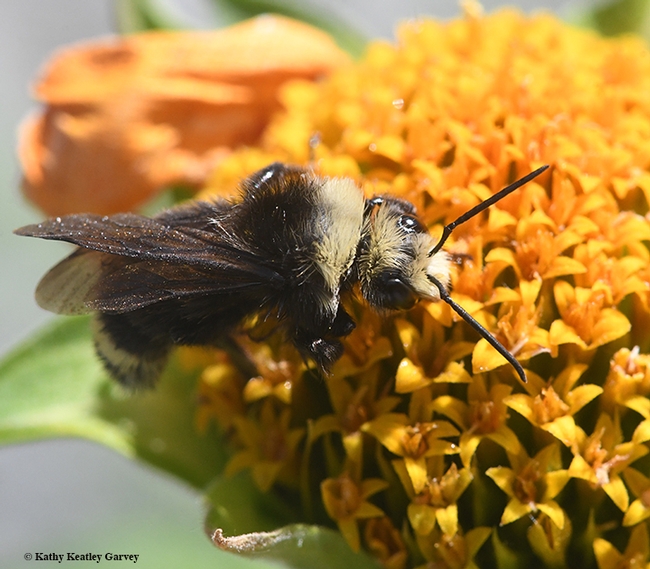
A yellow-faced bumble bee, Bombus vosnesenskii, is oblivious to the photographer. (Photo by Kathy Keatley Garvey)
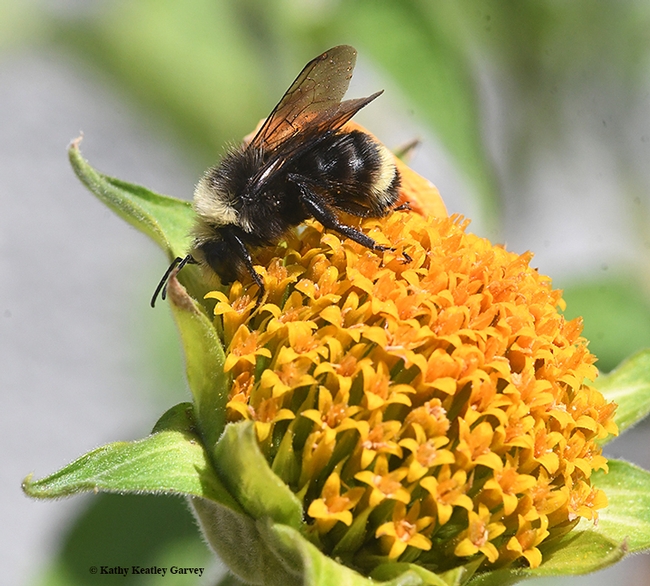
Hmm, the Mexican sunflower must be better over here. (Photo by Kathy Keatley Garvey)
Sorry, This Blossom Is Taken
So here's this male longhorned bee (Svastra) sipping a little nectar from a Mexican sunflower (Tithonia). As the late Mr. Rogers (1928-2003), star...
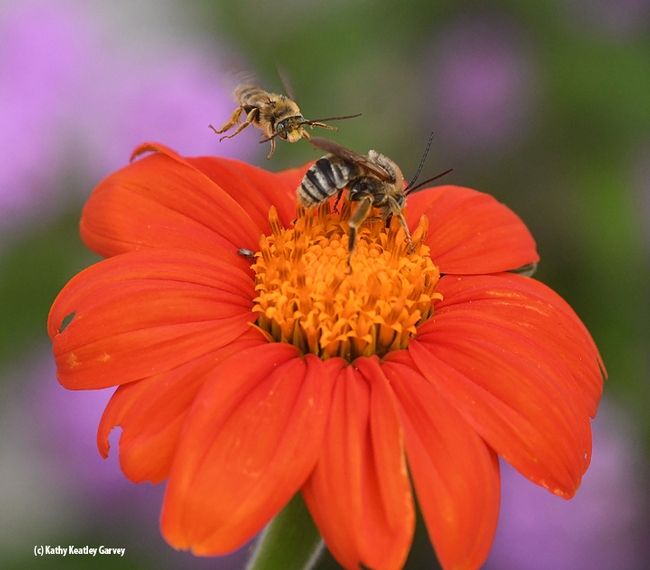
A male Svastra dive-bombs another male on a Mexican sunflower (Tithonia). This image was taken with a fast shutter speed of 1/3200 of a second. (Photo by Kathy Keatley Garvey)
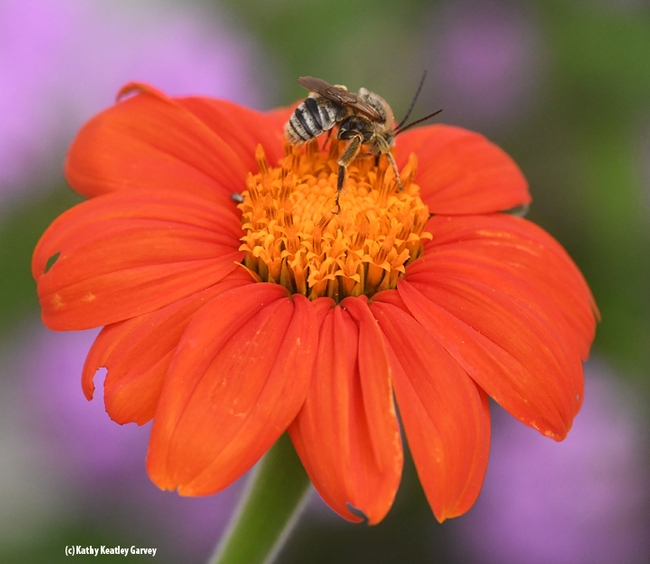
Following the dive-bombing, the male Svastra kept occupying the blossom. (Photo by Kathy Keatley Garvey)
The Year 2017: 'Survival of the Flittest'
How would you describe the year 2017? Survival of the fittest? In the insect world, it's more like "survival of the flittest." If you've ever...
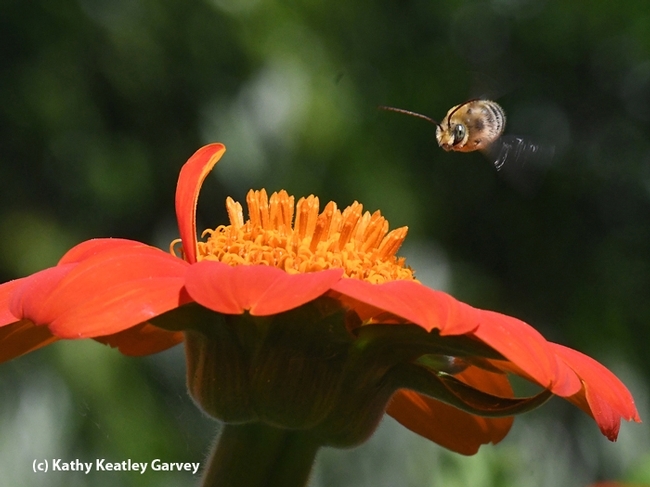
Have you ever seen a male long-horned bee (Melissodes agilis) doing a protective fly-by, trying to save a food source for the female of his species? (Photo by Kathy Keatley Garvey)
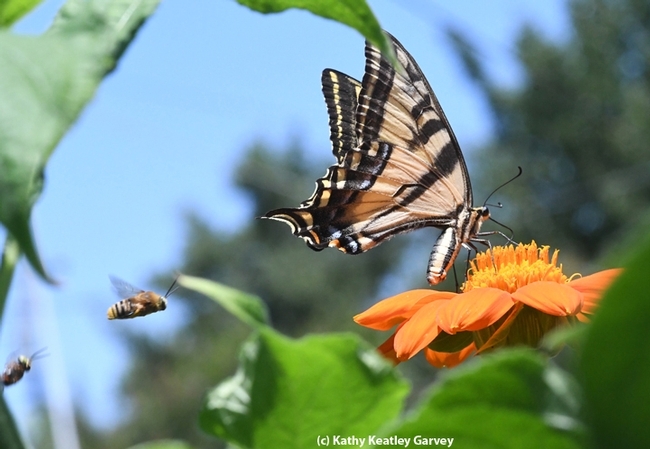
Have you ever seen a male long-horned bee (Melissodes agilis) challenging a Western tiger swallowtail seeking nectar from a Mexican sunflower (Tithonia)?(Photo by Kathy Keatley Garvey)
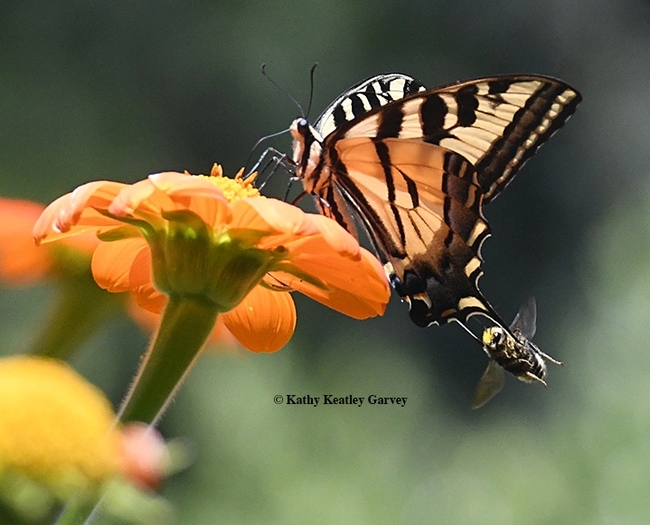
Have you ever seen a Melissodes agilis targeting a Western tiger swallowtail? A tiger by the tail? (Photo by Kathy Keatley Garvey)
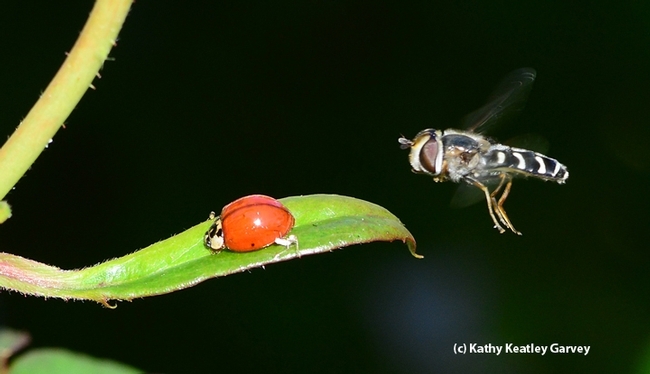
Have you ever seen a syrphid fly targeting a honeydew-laden lady beetle, aka ladybug, on a rose? This is an Asian lady beetle (Harmonia axyridis) and a syrphid fly, a Scaeva pyrastri, according to Martin Hauser of the California Department of Food and Agriculture. (Photo by Kathy Keatley Garvey)
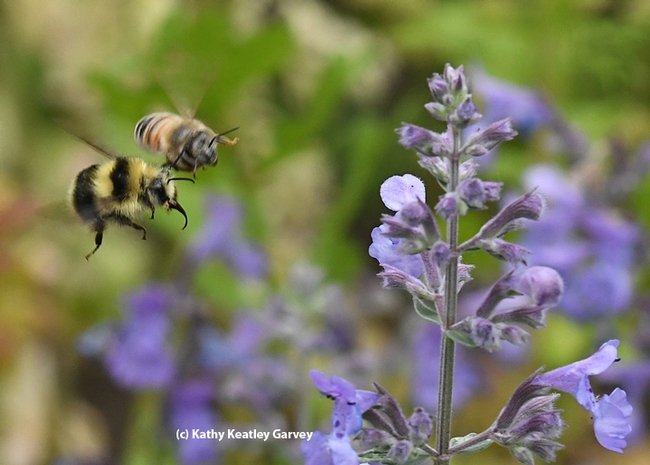
Have you ever seen a honey bee and bumble bee racing for the nectar on catmint (Nepeta)? The bumble bee is a Bombus melanopygus.(Photo by Kathy Keatley Garvey)
Musical Flowers: Jockeying for Position
You've heard of "musical chairs," that anxiety-driven elimination game involving chairs, music and players. When the music stops and a chair is...
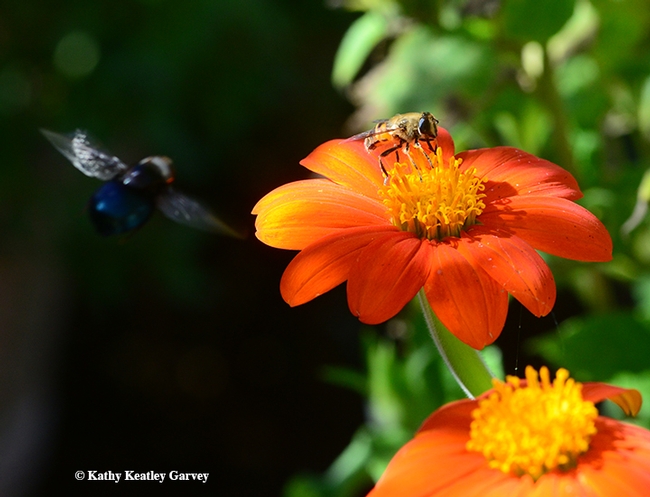
A black syrphid fly aims for the same Mexican sunflower, occupied by another syprhid fly. (Photo by Kathy Keatley Garvey)
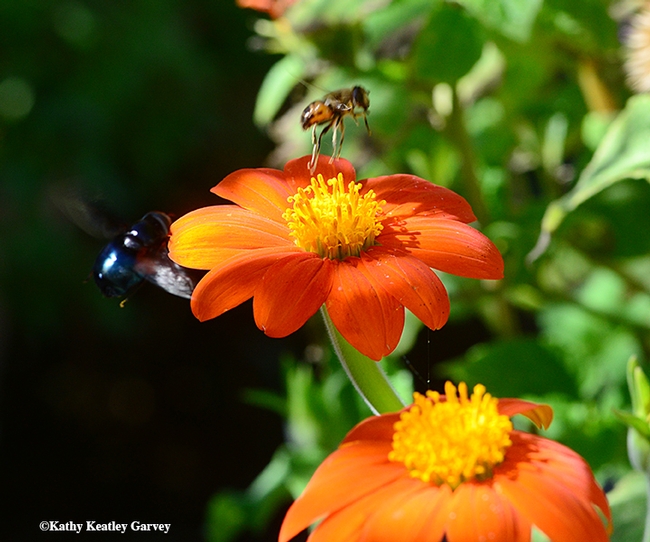
I'm outta here! The hover fly (probably Eristalis tenax) lifts off. (Photo by Kathy Keatley Garvey)
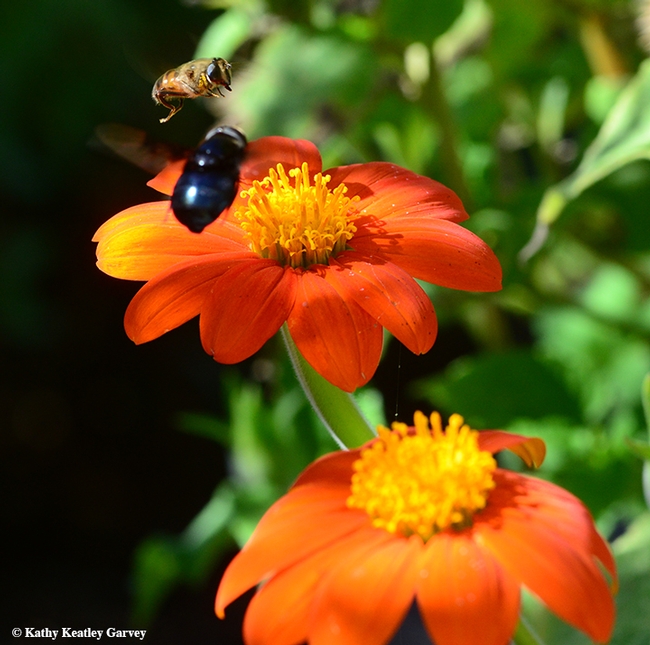
Not giving up and still jockeying for position, the two hover flies try to claim the same flower. (Photo by Kathy Keatley Garvey)
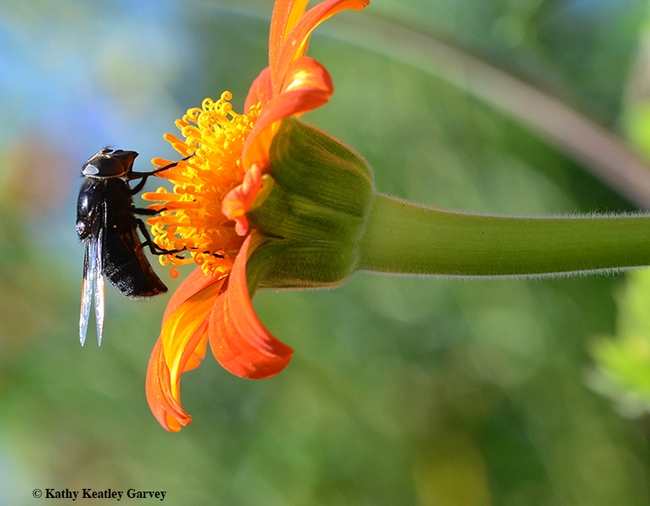
Ah, all mine. A black hover fly or Mexican cactus fly claims a Tithonia blossom. (Photo by Kathy Keatley Garvey)
Autumn's Majesty: Tithonia
If there's any flower that should be crowned "Autumn's Majesty," that would be the Mexican sunflower (Tithonia rotundifolia), aka "Torch."A member of...
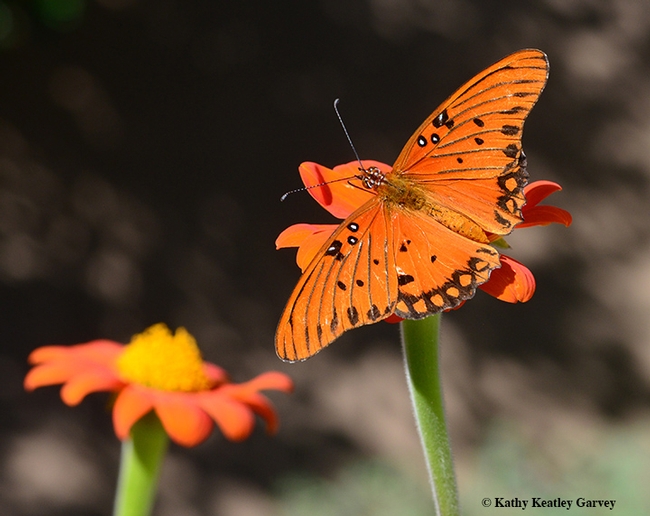
A Gulf Fritillary, Agraulis vanillae, lands on a Mexican sunflower. (Photo by Kathy Keatley Garvey)
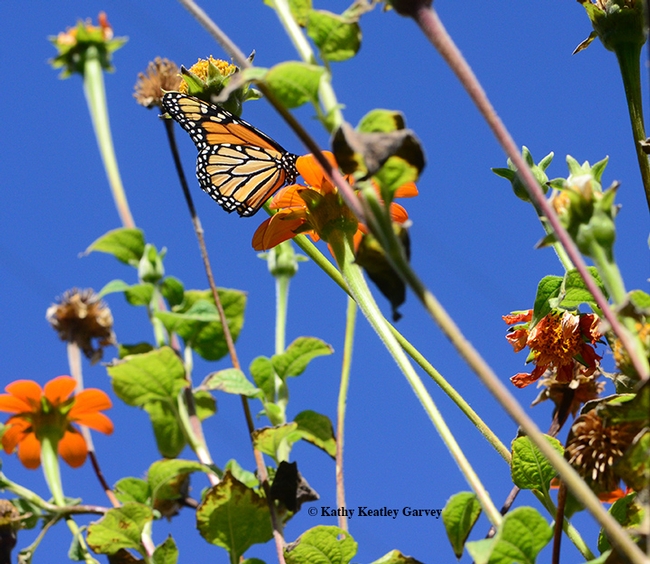
In a sea of nearly spent Mexican sunflowers, a lone migrating monarch, Danaus plexippus, finds food. (Photo by Kathy Keatley Garvey)
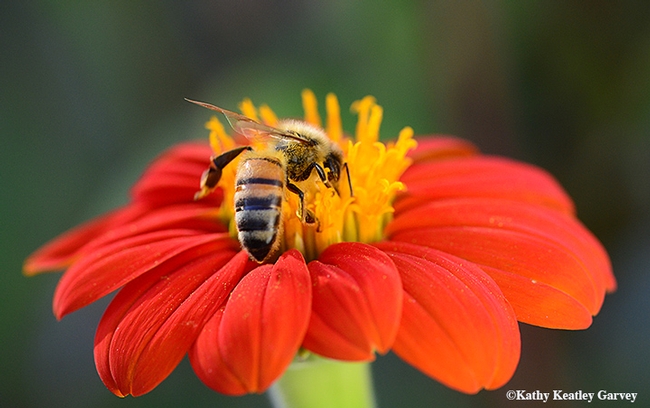
A honey bee, Apis mellifera, takes a liking to the Tithonia, aka Mexican sunflower. (Photo by Kathy Keatley Garvey)
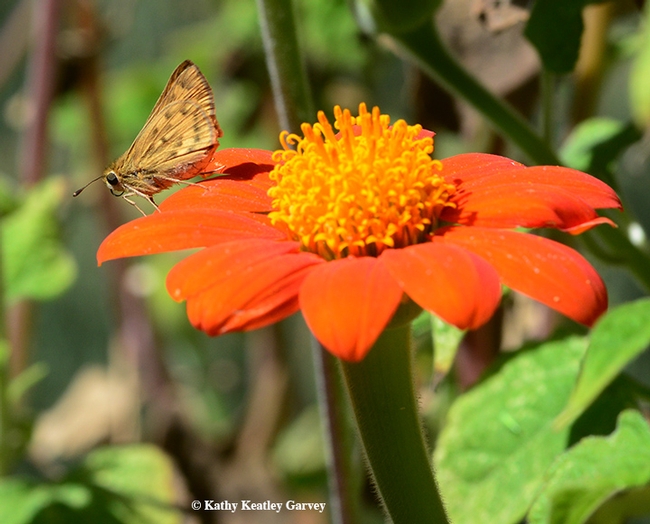
A skipper, family Hesperiidae, hangs out on the Tithonia. (Photo by Kathy Keatley Garvey)
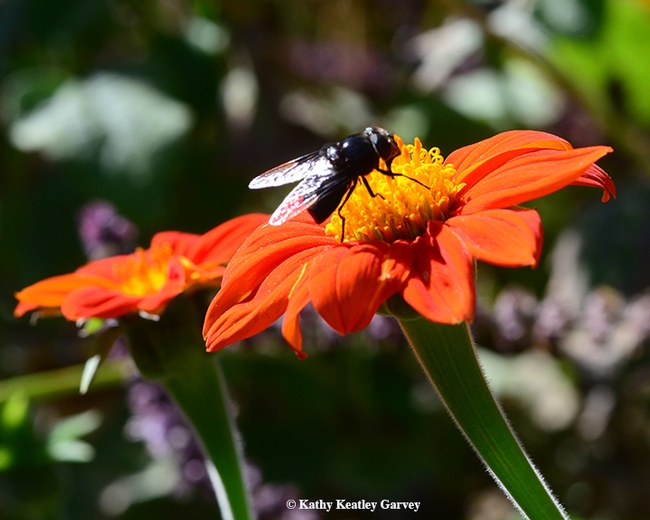
The wings of a black hover fly or syrphid, aka "Mexican cactus fly" (Copestylum mexicanum), gleam in the sunlight. (Photo by Kathy Keatley Garvey)

Predators hang out on the Mexican sunflower, too. A crab spider, family Thomisidae, waits for prey. (Photo by Kathy Keatley Garvey)

